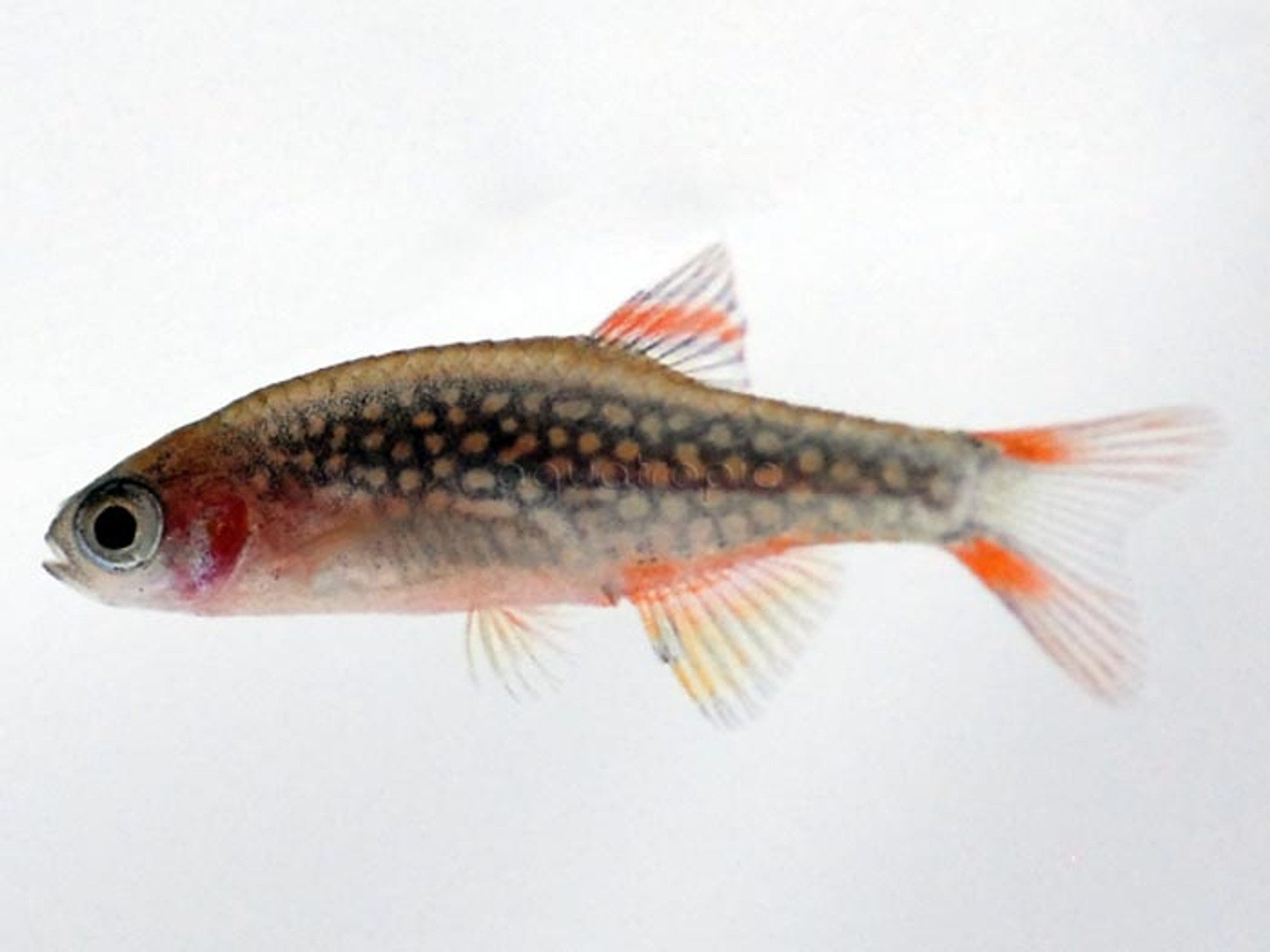Celestial Danio (Danio margaritatus)

Celestial Danio (Danio margaritatus)
Good things come in small packages, and never has this been more true than with the dazzling little fish known as the Celestial Danio. This gaudy species is a relative newcomer to both the aquarium world and the scientific community, having only been discovered and described a decade ago. The first specimens caused a sensation, trading for extraordinarily large sums of money, but it wasn’t long until it was discovered that this fish is easily bred. Nowadays, the once unattainable Danio margaritatus can be found in any reasonably well-stocked aquarium store for a modest price.
The natural habitat of the Celestial Danio consists of shallow wetlands filled densely with vegetation. The first population to be discovered was found near the base of a mountain in Myanmar, in an artificially flooded meadow near an agricultural dam. Large numbers were soon collected for the aquarium trade, and within a year the population had crashed and the species was barred from export. Since then, it has been found elsewhere in association with the Salween River drainage, and it appears to be a fairly common fish where it is known. And, thanks to the ease with which it can be bred by commercial breeders, wild-caught specimens are now quite rarely seen.
Both sexes show a similar patterning of creamy white spots along the sides and red stripes through the fins. These colors are particularly well-developed in the males, especially when in breeding condition, with females tending to be somewhat drab in comparison. Females also possess a slightly larger and more rotund body, though, with a maximum size of less than an inch, perhaps “large” isn’t the best term here.
In the wild, loose shoals of this species swim about in the underwater gardens they call home. Males are surprisingly pugnacious towards one another and, if kept in tight confines, are prone to nipping upon one another’s fins. For this reason, it’s best to give this species a bit more space than one would expect is necessary for such a tiny fish. When it comes to tankmates, it’s of course best to stick with small, tranquil options. Dwarf gouramis, dwarf rasboras, dwarf corys… really, anything that could be described as “dwarf” is a good bet. Certainly one of the most popular ways of exhibiting the Celestial Danio is in a small planted tank devoted solely to their care.
If well-fed with a mixed diet of flake foods and frozen worms and crustaceans, it won’t be long before spawning occurs The eggs are loosely scattered among any available plants, and the fry can be fed on suitably small foods. Even without any direct effort, a small group kept in a well-planted aquarium is likely to produce at least a few young which survive into adulthood.